Deep Woods Trip 5/20/23
Last weekend we went down into the Hocking Hills to visit the Deep Woods Farm and learn about plants found in acidic substrate that dominates the soil in southeastern Ohio (as talked about in the Batelle Darby page) as well as a few ferns, a unique plant called the Appalachian Gametophyte, and a couple other interesting plants to the area.
Acidic-Substrate Plants
Sourwood – Oxydendrum arboreum
This tree has alternate leaves with finely serrated margins and a subtle wavy outline. They turn bright red in the fall. The common name “sourwood” comes from the sour taste of the leaves which can be brewed into a tea that can quench thirst or treat diarrhea. Honey from the fragrant racemes of this tree is highy sought after. Sourwood trees are one of few trees that are not found naturally on any other continent and are the only species within their genus (https://plants.ces.ncsu.edu/plants/oxydendrum-arboreum/).
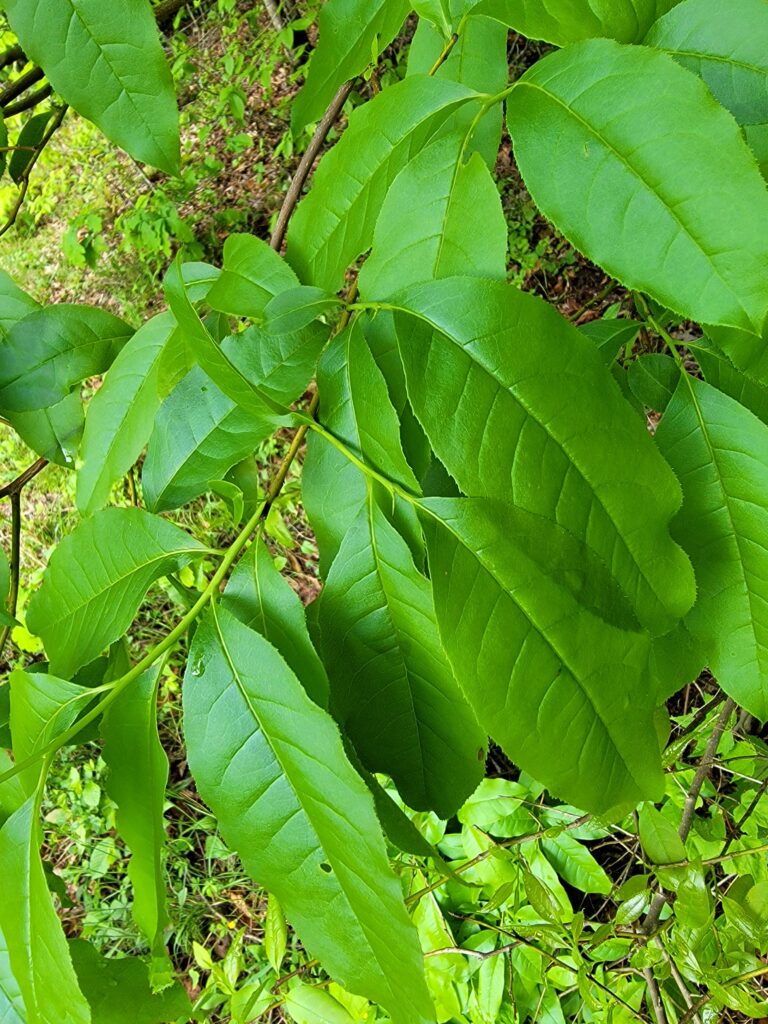
Leaves of the sourwood tree.
Hemlock – Tsuga canadensis
A shade-tolerant evergreen in the pinaceae family, hemlock is found in the cool, moist valleys of Hocking Hills. They are threatened by the invasive insect Hemlock wooly adelgid. The high-tannin bark of the tree was historically important to the tanning industry (https://mortonarb.org/plant-and-protect/trees-and-plants/eastern-hemlock/).

A slightly blurry picture of a hemlock branch with new growth.
Lowbush Blueberry – Vaccinium angustifolium
Blueberry bushes are widely distributed and have widespread varieties. The lowbush blueberry is the most widely used commercial “wild blueberry.” They respond well to natural fires, stimulating growth. Indigenous peoples would practice controlled burning to increase blueberry yields (https://www.gardeningknowhow.com/edible/fruits/blueberries/growing-lowbush-blueberries.htm).
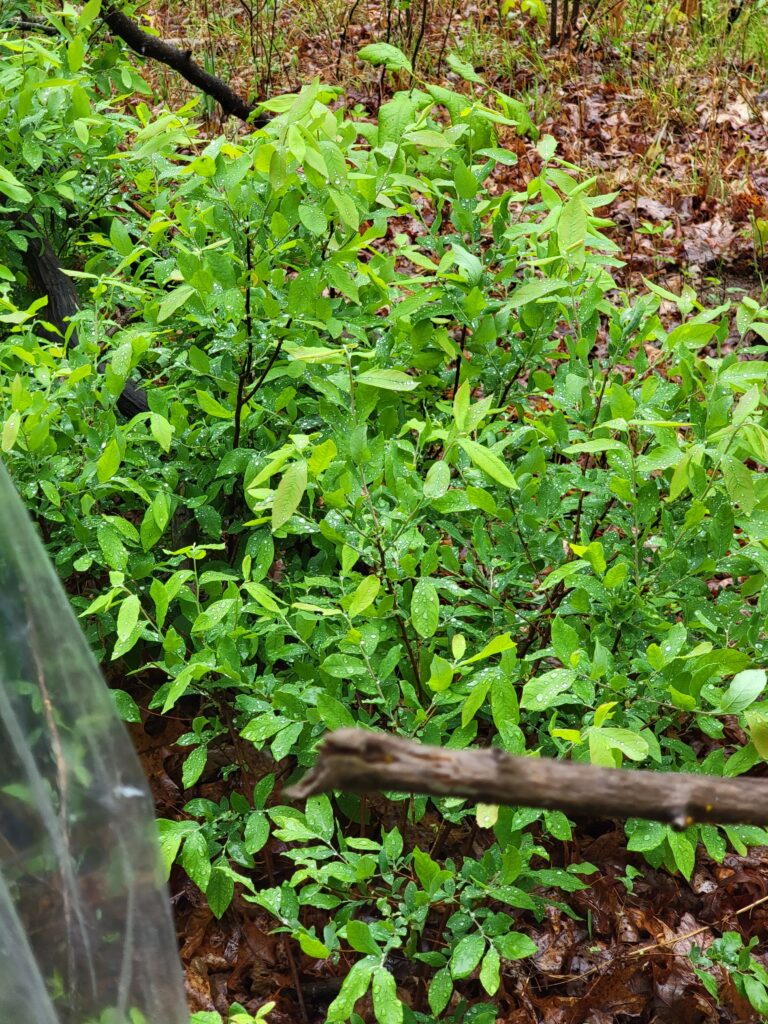
A lowbush blueberry plant, no berries yet!
Chestnut Oak – Quercus montana
Chestnut oak has alternate leaves with rounded teeth. These oaks are most often found on ridgetops in dry, rocky conditions. They have the thickest bark of the eastern North American oaks that is very ridged. They are rapid growers but do not usually reach tall heights (https://www.uky.edu/hort/Chestnut-Oak).
Ferns of the “Deep Woods”
Christmas Fern – Polystichum acrostichoides
Christmas fern received its name from its ability to stay green through the winter, known as a “wintergreen.” (https://www.wildflower.org/plants/result.php?id_plant=poac4)
They are hemidimorphic, with the top being the fertile portion and bottom being sterile. Furthermore, they have pinnate leaflets and peltate indusia, which means it has a circular cap which covers the spore-bearing structures (sori).
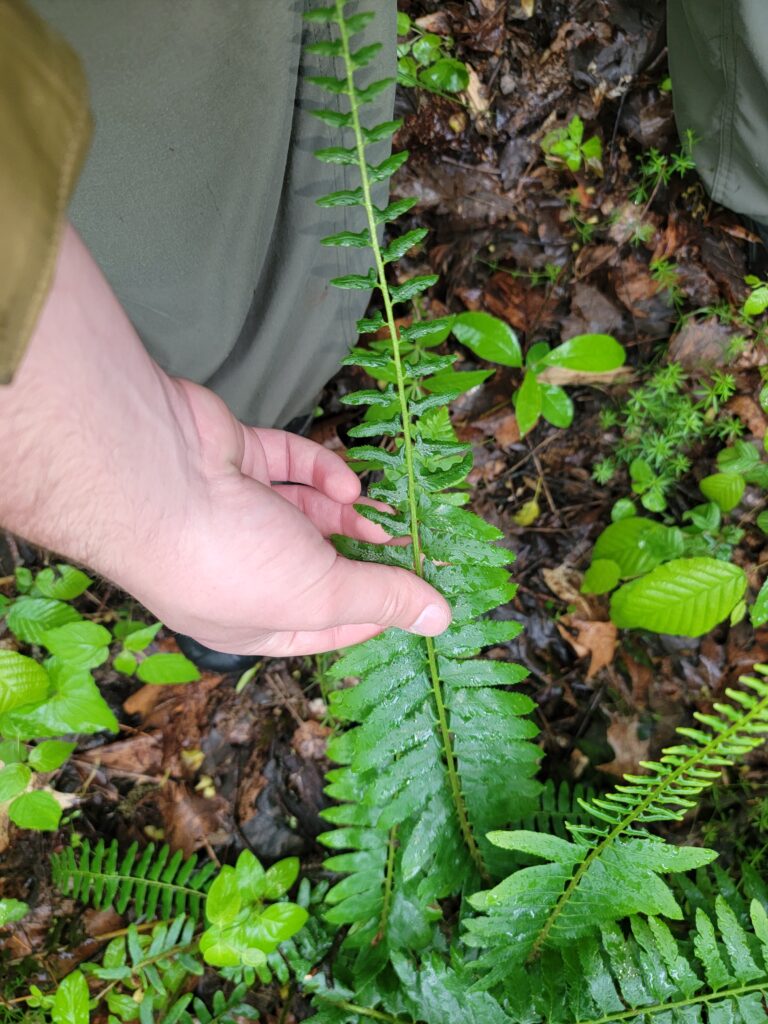
A frond of the Christmas fern.
Cinnamon Fern – Osmunda cinnamomea
Named for the cinnamon-like sporangia fronds. Slow to establish but very long-lived (https://plants.ces.ncsu.edu/plants/osmundastrum-cinnamomeum/).
This fern is holodimorphic with different fronds devoted to spore production. It is also has pinnate-pinnatifid fronds. I was unable to find an indusium for this fern (https://www.wildflower.org/plants/result.php?id_plant=OSCI).
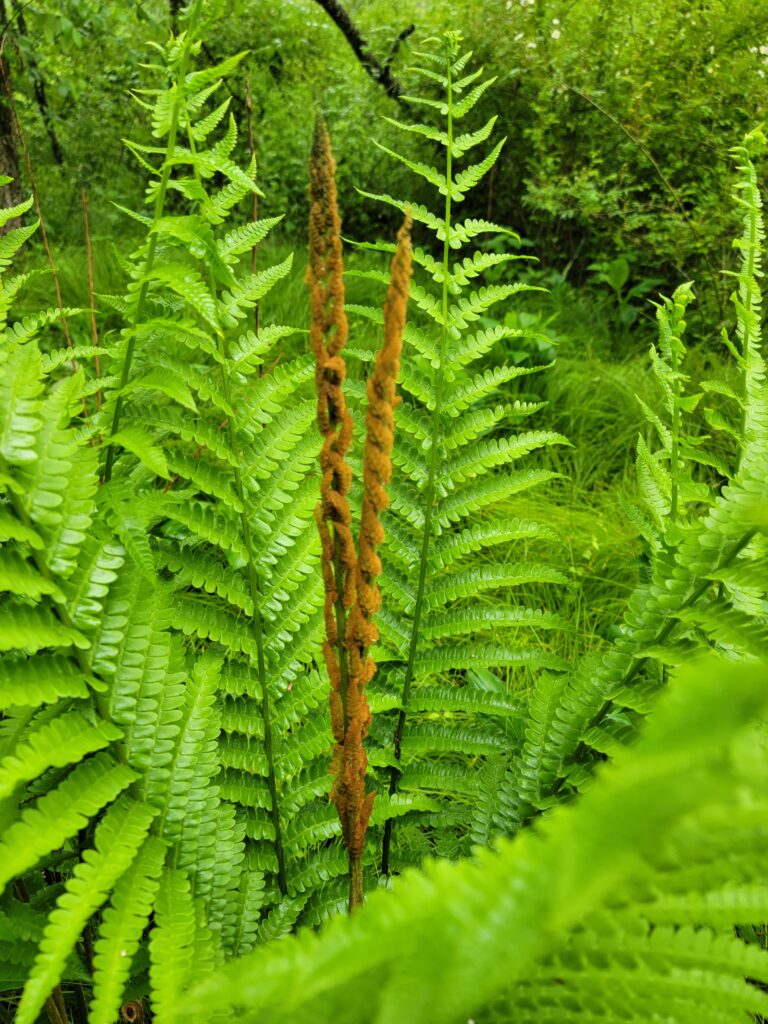
Image of the cinnamon fern with different frond types.
Maidenhair Fern – Adiantum pedatum
This fern has a distinct arc to almost-circular shape. This type of fern is often found in the horticultural trade (https://www.prairienursery.com/maidenhair-fern-adiantum-pedatum.html).
Maidenhair fern is monomorphic and has a false indusium. The leaflets are thrice-compound/tripinnate.
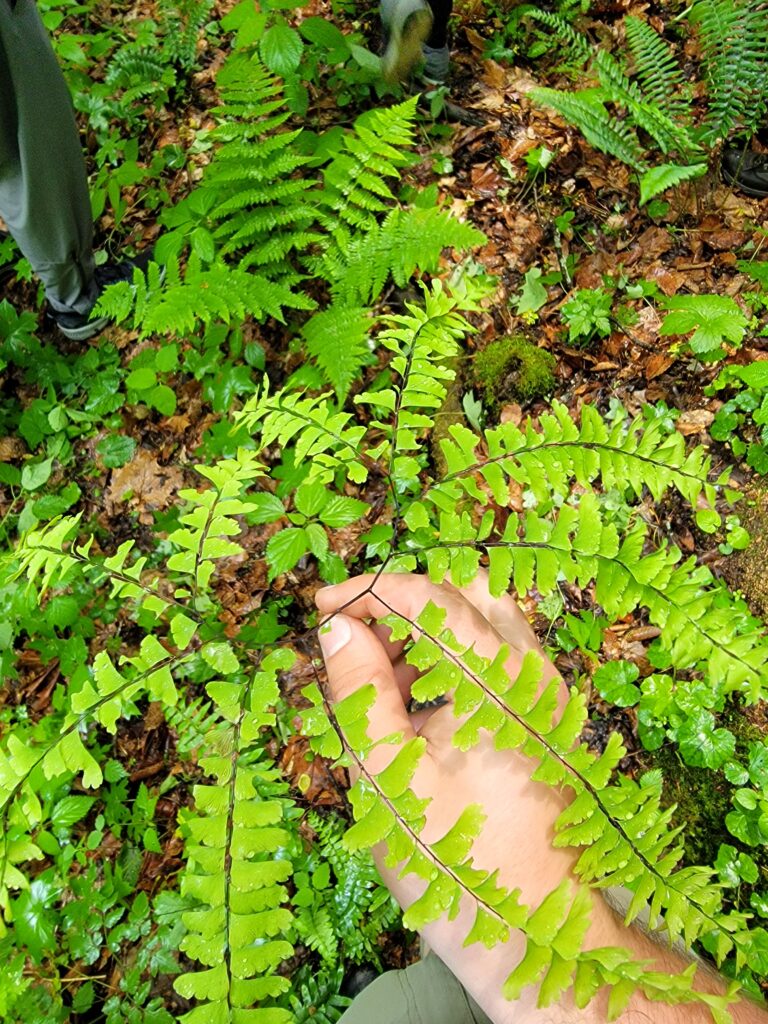
The magnificent maidenhair fern.
Sensitive Fern – Onoclea sensibilis
The sensitive fern has more rounded teeth on the leaflets of each frond. It is named for its sensitivity to frost (https://www.wildflower.org/plants/result.php?id_plant=ONSE).
This fern is holodimorphic and has bipinnatifid fronds. I was unable to determine indusium type.
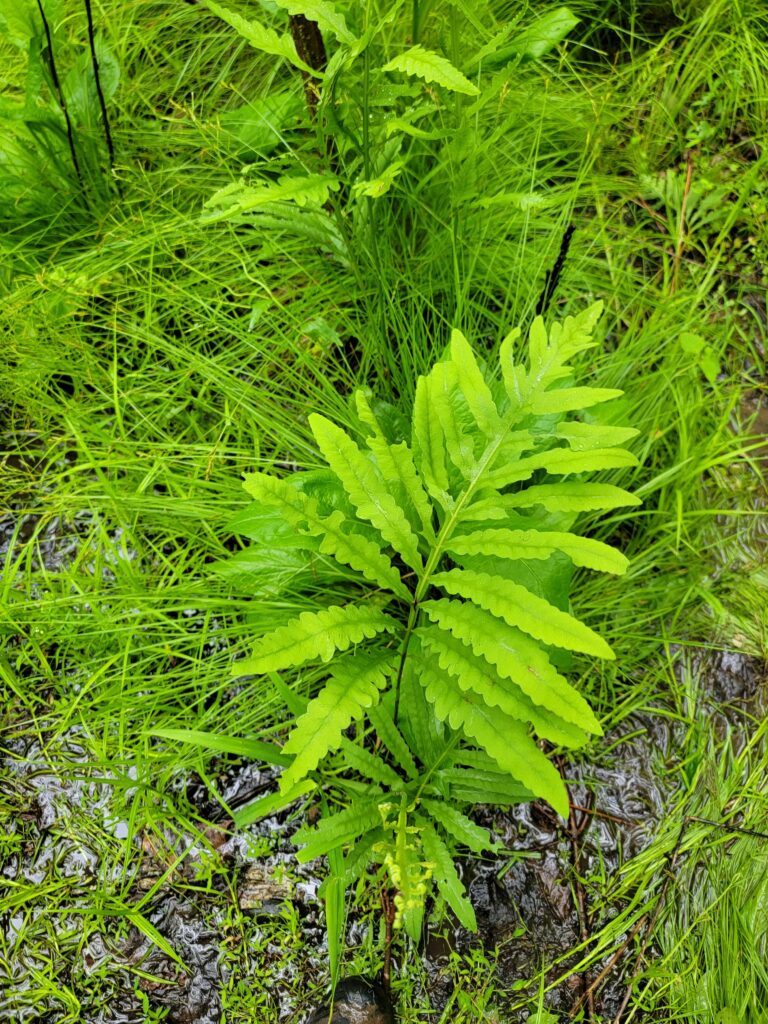
Rounded teeth on the sensitive fern…don’t be mean to it!
The Appalachian Gametophyte
Vittaria appalachiana, commonly called the Appalachian gametophyte, is a very unique fern. It is part of a family that is almost exclusively tropical species. Furthermore, it is one of only 3 known ferns that have never been observed to have a mature sporophyte. It disperses through gemmae, which are propagules of the parent plant that grow on thr fringes and eventually drop away to spread genetically identical offspring. Gemmae are much larger than spores, up to 1 mm in length. This makes them too large for long-distance wind dispersal though they may still disperse short distances by this mean. Water and animals are other modes of dispersal. Evidence of slugs dispersing gemmae has been shown in a 1995 publication by researches Kimmerer and Young.
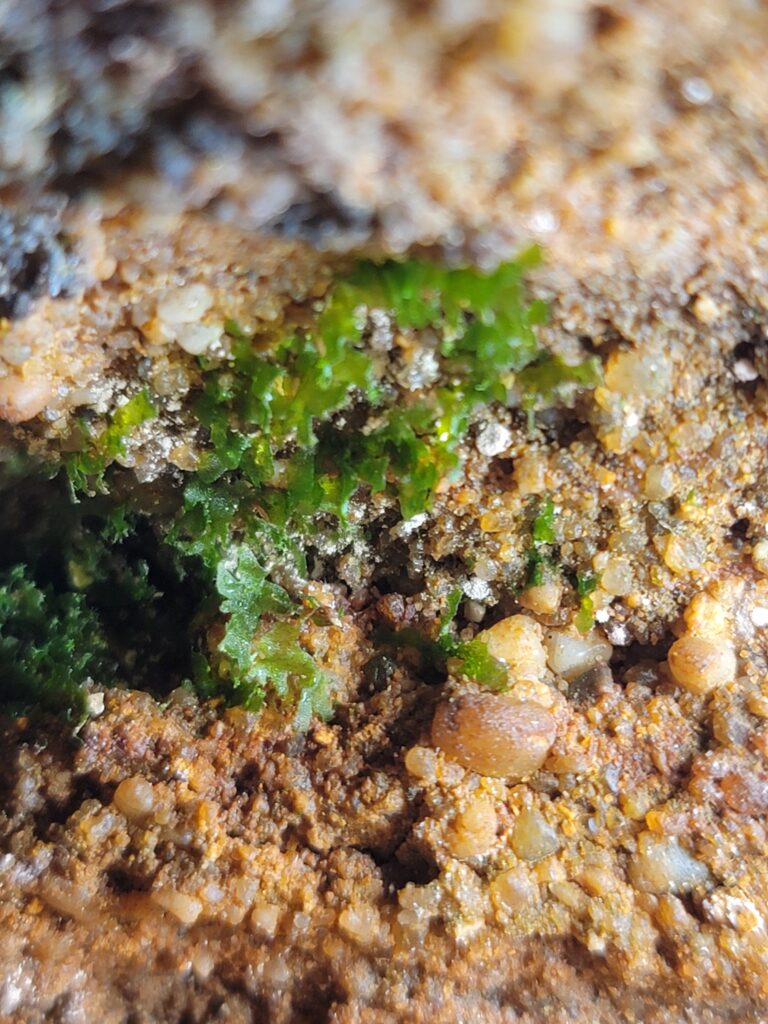
An Appalachian gametophyte found in small sandstone crevice of a rockhouse. These are extremely small.
It is believed that all remaining gametophtes are remnants of the now extinct sporophyte which could have happened during the glaciation period. If they had survived after glaciation, the dispersal would have extended farther north than it has. There is evidence to support the inability for more dispersal of this species from tropical areas, due to historical phylogenetic research concluding dispersal from tropical areas occurred only once. The explanation for the current wide dispersal is probably due to pre-existing spores surviving glaciation as stated before.
Invasives of Hocking Hills
Multiflora Rose – Rosa multiflora
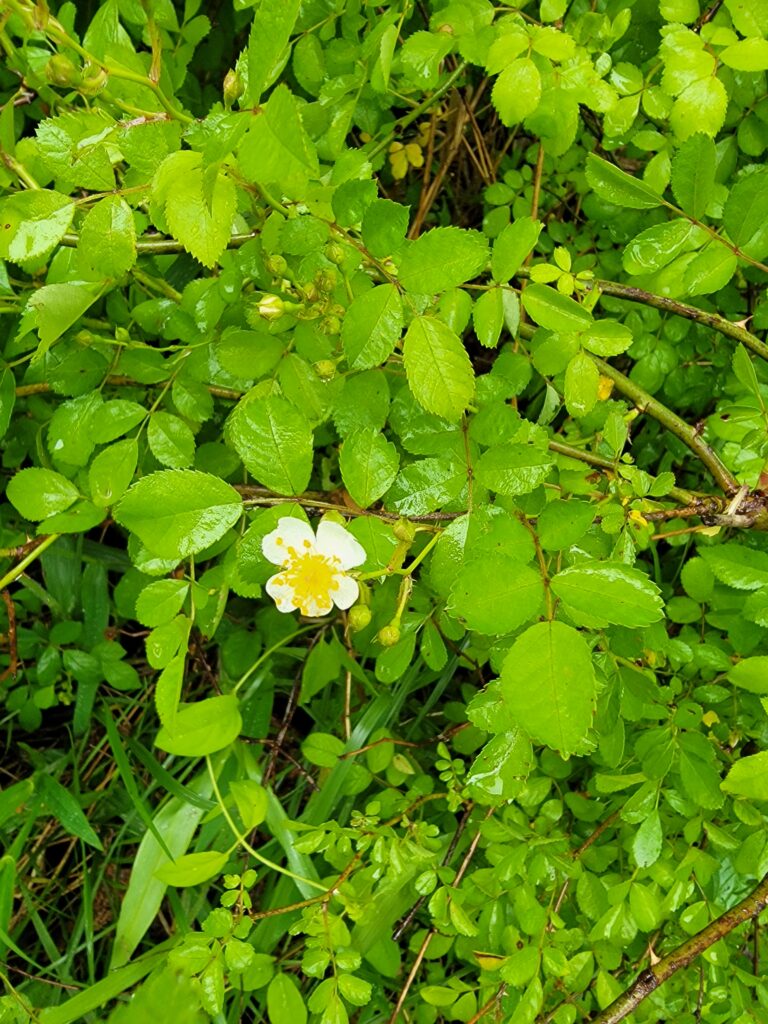
Singular flower of the multiflora rose.
This invasive is native to eastern Asia and arrived in the late 1700s. It was originally used as an ornamental and natural fencing. They form dense thickets that crowd out native species (https://www.invasivespeciesinfo.gov/terrestrial/plants/multiflora-rose). Prevention, mechanical control (pulling, digging, mowing, and cutting), and chemical control from herbicides (https://www.ecolandscaping.org/07/landscape-challenges/invasive-plants/multiflora-rose-an-exotic-invasive-plant-fact-sheet/).
Japanese Stiltgrass – Microstegium vimineum
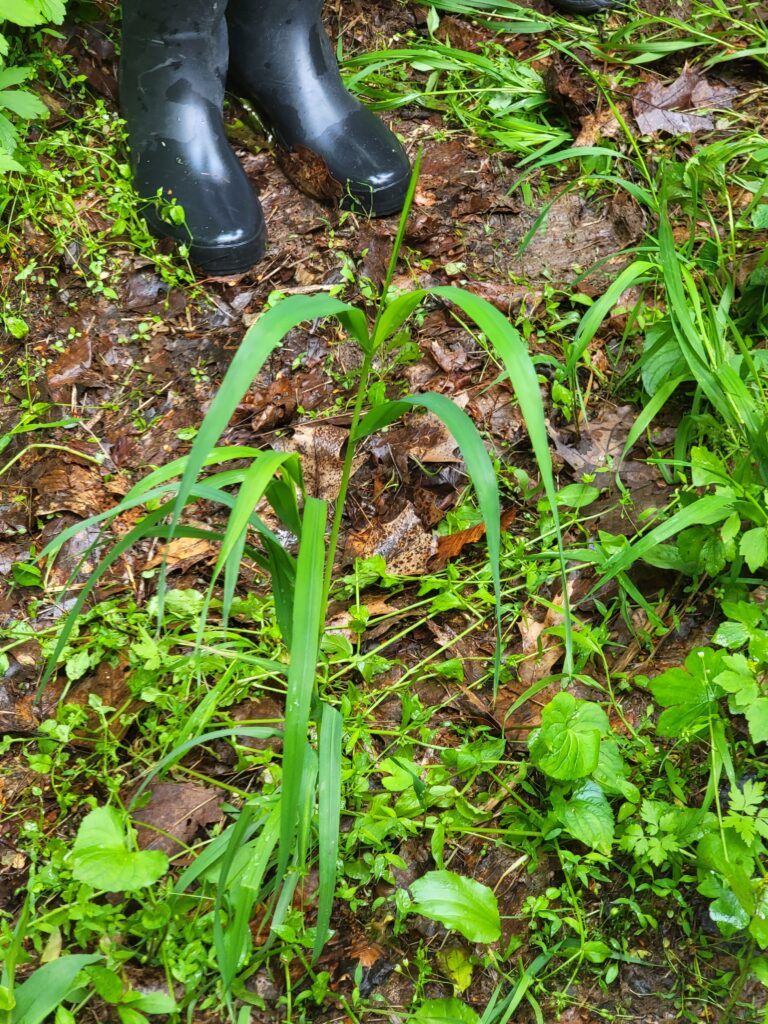
A stiltgrass plant.
This, as the name suggest, was introduced from Asia sometime before discovery in 1919. It was probably used as packing material for shipments from China. It can form dense stands that crowd out native species (https://www.invasivespeciesinfo.gov/terrestrial/plants/japanese-stiltgrass). Mulches can prevent growth, mechanical control and chemical control through herbicides (https://njaes.rutgers.edu/fs1237/).
Two Unique Plants!
Rhododendron – Rhododendron spp.
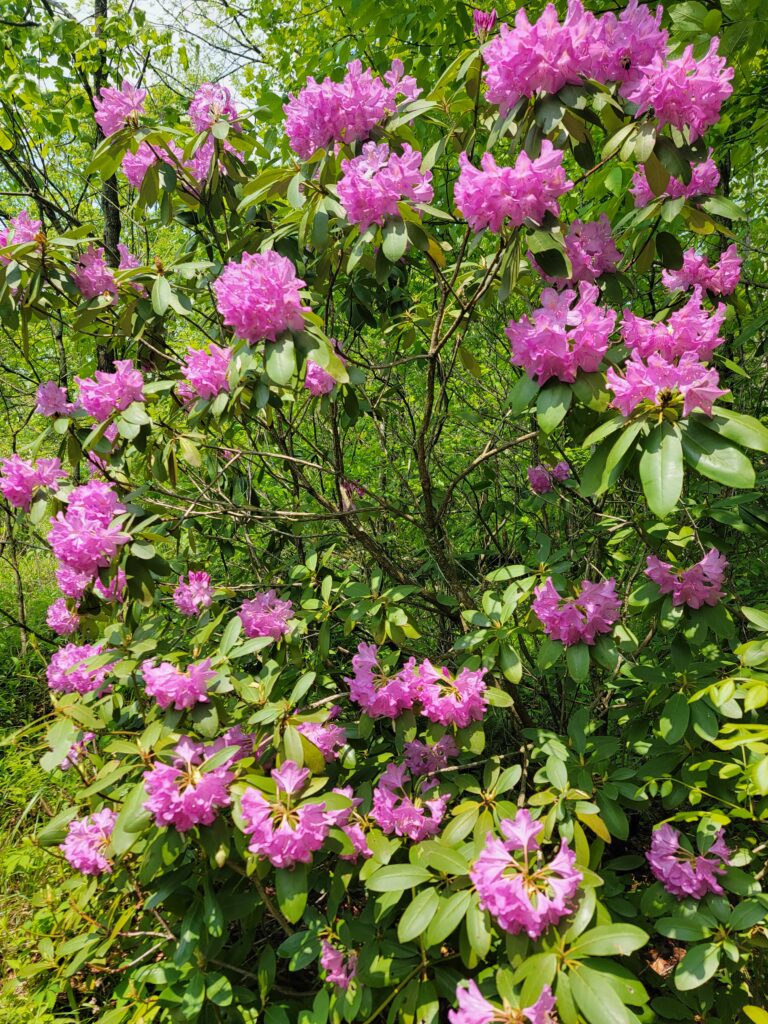
Bright flowers of this rhododendron bush.
Rhododendron are striking plants with bright flowers. American Rhododendron (Rhododendron maximum) are the most frequently found species in the Appalachian region. This is a different species but still similar in structure. Rhododendron can inhibit growth of nearby seedlings. Distribution has been furthered by fire suppression practices of the 20th century.
Bear Corn – Conopholis americana
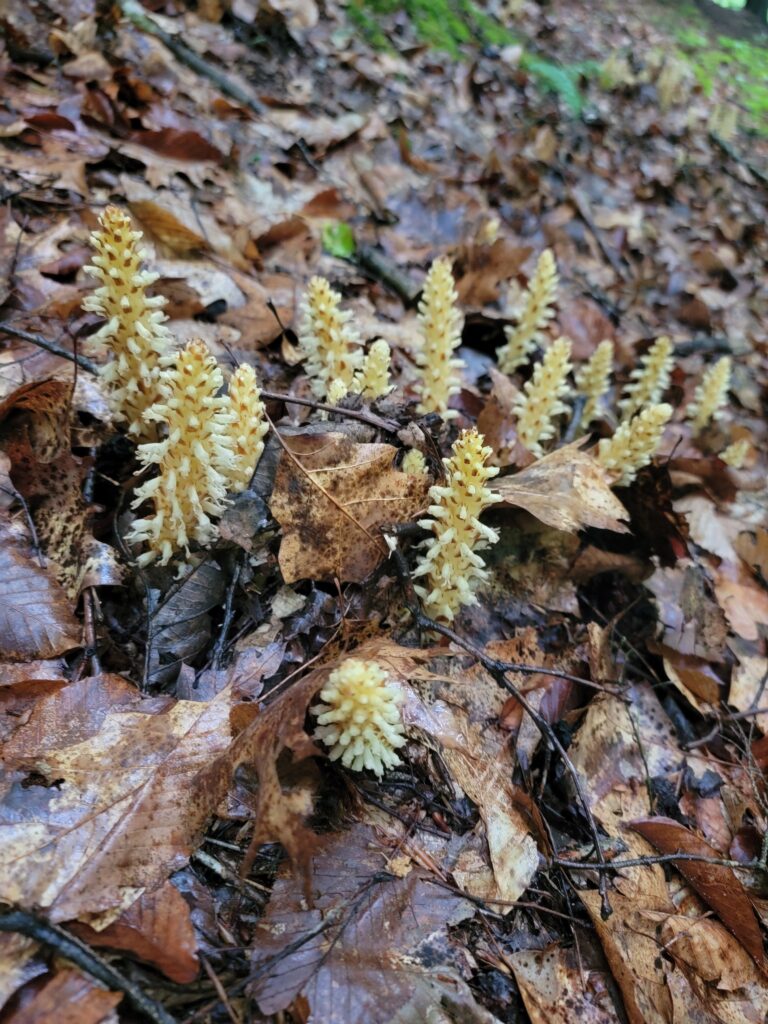
The alien-like plant structures of the bear corn.
These plants are unqiue in their complete parasitism and lack of photosynthesis. They have no leaves and instead only have small scales. They grow on roots of woody plants in ravines, such as oak and beech. These were found within a stand of Eastern hemlock.
